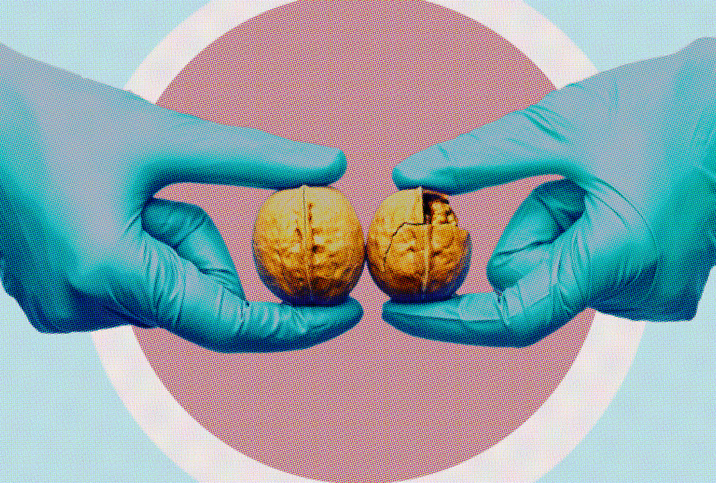Why Is Testicular Cancer a Young Man's Disease?

Let's face it, a lot of young men seem to have it made. Their lifestyle is carefree. Opportunities in all aspects of life are ahead of them. The prospect of old age and its attendant health concerns feels like it is a long time from now. Cancer seems especially distant. And that's largely true—except for one type.
When you hear the words "testicular cancer," you need to know two important aspects: One, testicular cancer is very much a young man's disease, with an average age of only 33 at diagnosis. And two, nothing you do or don't do will cause the condition.
It's a cancer without a known cause, but answers are available to other important questions about the condition. Here's what you need to know about testicular cancer, including why it tends to affect mostly young men.
Origins of testicular cancer
The origins of testicular cancer can be traced back to the very beginning of life: smack dab in the middle of embryonic development.
Most types of testicular cancer are caused by germ cell tumors, which appear only in reproductive cells, such as in the testicles or ovaries, explained Timothy Wilson, M.D., a urologic oncologist and the director of the Urology and Urologic Oncology Research Program at Saint John's Cancer Institute at Providence Saint John's Health Center in Santa Monica, California. The catch with germ cells, however, is that they are the earliest cells to develop in our body. In biological females, early germ cells develop into eggs, while in biological males, they establish the cells for the development of sperm. Although sperm won't form until puberty, the early germ cells will develop a specialized germline from which all future sperm will develop.
So how exactly does sperm in a still-developing fetus translate into testicular cancer in a 30-something male? Well, it's thought that somewhere during the formation of those early germ cells, any cancer-causing mutations that occur could take decades to show up as cancer. The earliest cells to form in the body may also be one of the first to show up as cancer, thanks to any mutations that occurred during early development.
"A lot of transformations happen with the early developing germ cells, so it just takes time for cancer to develop," Wilson said. "In general, it's thought that germ cells will develop a genetic abnormality that will, over a couple of decades, develop into cancer."
The germ cell origination is just a theory and no true cause of testicular cancer is known, but Adam Ramin, M.D., a urologist and medical director of Urology Cancer Specialists in Los Angeles, said it's thought that the high turnover of sperm regeneration also plays a role. Once puberty begins, sperm regeneration happens every three months, and because the regeneration process involves DNA duplication, it could take time for any genetic abnormalities to come to a head.
"It probably takes 20 years with spermatogenesis for genetic mutations to form, so over the course of many years, it's possible that a genetic abnormality comes into play, although this can't be said for sure," he said.
Ask your mom this question
Testicular cancer is a unique kind of cancer due to its high survival rate and common occurrence in young men. It's also one of the few types of cancer that has no clear lifestyle or environmental risk factors associated with it.
That means nothing you do or don't do increases your chances of getting testicular cancer.
The lack of a discernible cause or link makes it even more puzzling, but here's a quick rundown of what doesn't cause testicular cancer:
- Phones
- Tight underwear
- Sexual activity or history
"Sex or no sex—it doesn't matter," Wilson added. "Your sexual history does not affect your risk of testicular cancer."
According to Ramin, while testicular cancer is not related to lifestyle, there is a hereditary component to the disease. If your brother or father had testicular cancer, your chances of developing the condition increases. And if you've had testicular cancer in one testicle, you have a slightly higher risk of developing cancer in the other. However, in most cases, the cancer stays isolated to just one side.
The few known connections to testicular cancer include:
- Some patients have chromosomal abnormalities
- Patients may have testicular microcalcification, which is a small amount of calcification in the testes that usually goes undetected until they receive an ultrasound for another reason
- The illness occurs predominantly in white men
- Some patients have had an undescended testicle
That last link is a key point because it's the single most important risk factor for testicular cancer. At birth, all babies with testicles are assessed to make sure that each testicle descends into the scrotum. In some babies, one or both testicles remain up in the body. When that occurs, the risk for developing testicular cancer later in life skyrockets.
Doctors aren't entirely sure why there is such a strong connection between an undescended testicle and testicular cancer, but they do know there is a link. So if you aren't sure about your testicular status at birth, now might be a good time to call your mom. If you do have a history of an undescended testicle, Wilson recommends that you get assessed annually by a primary care provider for any abnormalities in the testicles.
Get to know your testes
Even though testicular cancer is relatively rare—only 1 in about 250 men will develop it in 2022, according to the American Cancer Society—and comes with a high survival rate, early assessment is still important. Along with knowing your risk factors, especially if you had an undescended testicle at birth, anyone with testicles should perform monthly self-exams beginning at puberty.
Most commonly, testicular cancer presents as a hard lump in the testicle, and many men mistake the bump for an injury, Wilson said. But if you get to know how your testicles feel normally, you'll be better able to recognize anything unusual.
The good news is that if you do find a lump and get diagnosed with testicular cancer, your prognosis is optimistic: Localized cases (meaning the cancer hasn't spread) have a 99 percent five-year relative survival rate, and while surgical removal is the go-to treatment, sexual function and performance likely will not be affected. If appearance is a concern, a prosthetic testicle or two can be placed with no other side effects. Fertility is affected by the loss of one or both testicles, but men interested in having children are encouraged to bank sperm before treatment begins.
Wilson cautioned that while testicular cancer is an uncommon problem, self-exams are still important as a simple and effective method for early diagnosis.
"Be aware," he said. "It's a highly curable disease, but it's most curable and has fewer side effects when it's found early."


















